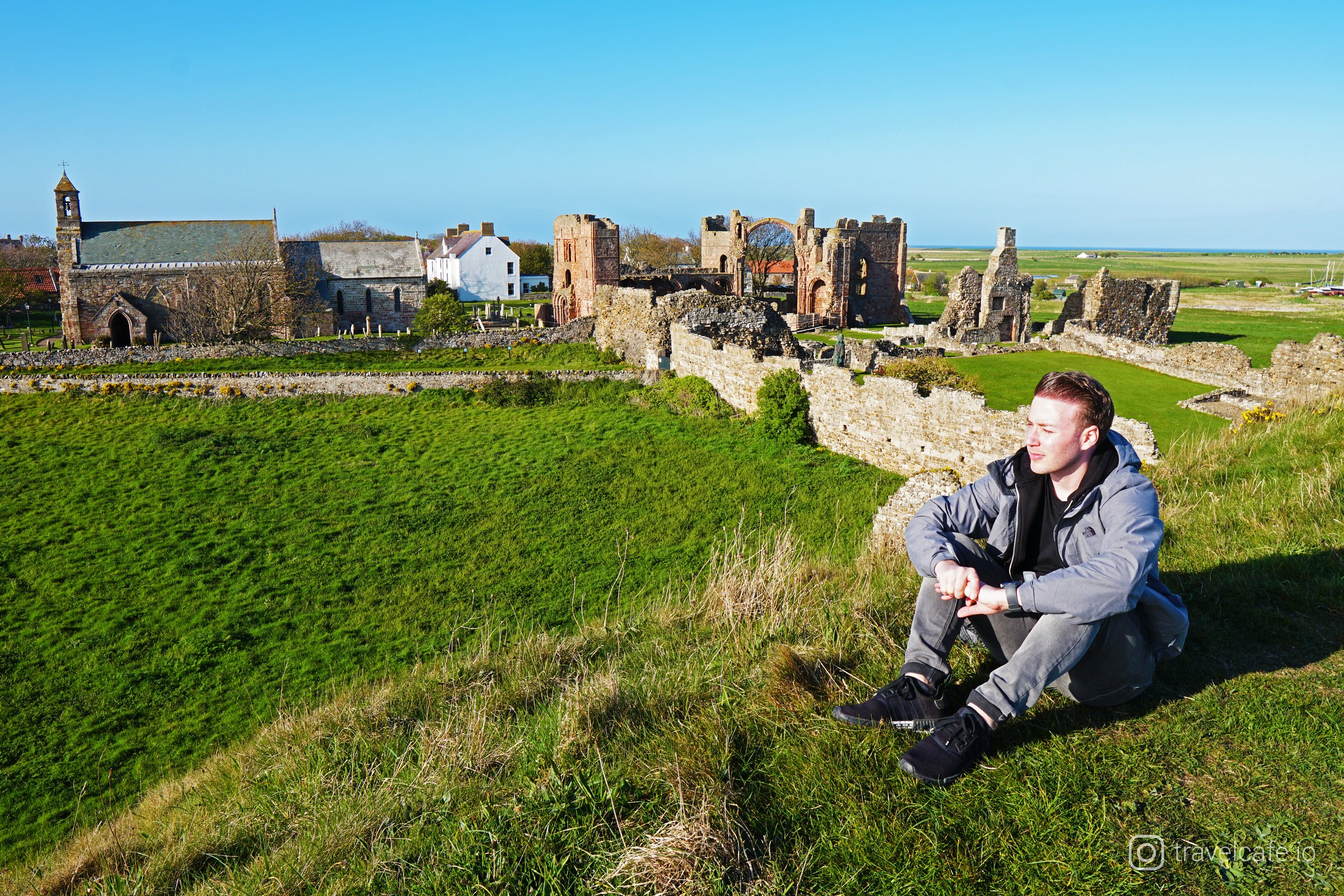The Holy Island of Lindisfarne
On our previous road trip through the United Kingdom, we planned to visit a little location referred to as the Holy Island of Lindisfarne. Little did we know about the historical significance of this place, but its beauty was a form of its own.
The route to the island is engulfed at certain points in the days. You must time your approach and departure depending on the time of year and day. Once the water covers the road, you will have to wait until the next day, or exit by boat. You must consult the timetables to plan your journey. These are available at the parking lots and online.
Measuring a mere 3 by 1.5 miles, the island is tiny. The quaint village offers mass appeal to explorers looking to escape the hustle and bustle of tourist regions. This sole village on the island has somewhere between 150-200 residents. This doesn’t stop the village from hosting over half a million visitors, annually. Most travelers do day trips to the island, but there is a marginal number of overnight stays offered.
We had spent the entire day exploring the coast and several other castles in route. In fact, you can see Bamburgh Castle across the water, which we had just left. We weren’t sure if we’d make the island before the causeway was covered. We did. As we arrived later in the day, very little was left open. We’d soon find out that it didn’t matter. Some of the best parts were all free and open pathways. However, you can easily spend a day here learning of all the historically rich remnants. The Gospels Garden, Heritage Centre, Priory, St. Mary’s Church, and Lindisfarne Castle are just some of the places to check out, not to mention the unique shops and restaurants. Maybe just have a picnic in the grass, sit on the water’s edge and read a book, or capture endless photos of the awesome panoramic views.
Lindisfarne Priory
Heritage Centre and ruins
The island itself has recorded history dating back to the 6th century AD. One of the better-known figures is Saint Aidan. He was an Irish monk. He is known for bringing Christianity to Northumbria (Northern England/Southeast Scotland area) or converting Anglo-Saxon Pagans around 635 AD. He founded the Lindisfarne Priory and was the first bishop. The most interesting part of this, to me, was that Aidan was tied to the island of Iona, Scotland which I had also visited in another recent, coincidental journey.
Christianity was being pushed out by paganism in Britain. Oswold of Northumbria was a young king who was raised in exile, baptized as a Christian, and was on a mission to return Christianity to Britain. Once he attained the crown of Northumbria, he brought missionaries from Iona. Initially, the missionary sent was a failure. This is where Aidan was sent in and succeeded. Aiden chose Lindisfarne due to its proximity to Bamburgh Castle. The monks following Aidan assisted on his mission to bring Christianity back and earn the respect of the people he individually and personally engaged with.
Watch the sunset
The short walk to the hill gives amazing views
The other character that is well known is Cuthbert of Lindisfarne. He was a monk that became a patron saint of Northumbria. He became a monk due to Aidan. After a series of events and transfers, he became bishop of Lindisfarne in 684. After his lifetime, claims of healing miracles while people prayed at his grave, and being regarded as a saint, the legacy of Cuthbert made Lindisfarne an even more pivotal point of Christianity for Britain. The Viking raids in the 8th century would be known to devastate the island and form an influential impact on the sacred center of Christian beginnings for the nation. The surviving Christians from the first raid recorded the event on the Domesday Stone which you can see in the museum. This also was the rise of the “Viking Age.”
The Lindisfarne Gospels are manuscripts that have survived from Anglo-Saxon England. These contained the illustrated Latin copy of the Gospels of Matthew, John, Luke, and Mark which tell the story of Jesus Christ. It is said the artist is possibly Eadfrith, a 7th century bishop of Lindisfarne who worked with a team of unknown monks. They are now housed in London, but they were made on the Holy Island which was interesting to know.
The name “Holy Island” came around the 11th century when the words “Insula Sacra” appeared in text referring to Aidan and Cuthbert.
The Priory Ruins you will see are dated around the 12th century, yet they claim to be descended from the early 6th century monastery. You can pay to enter the ruins, if you make it in time. However, you can get a spectacular full view, nearly bird’s eye, from the short walk to the hill behind it. The hill has wonderful scenery and was my favorite part of the island. You see the alternate coastline across on a clear day. You turn and admire the priory ruins, and you do a 360 to appreciate the natural details within the village itself.
The castle is arguably the pinnacle of the island. It is a slightly longer walk, but not far. I appreciated the views from most parts of the island. You can choose to explore parts of the castle for a small fee. The views from the castle are equally impressive. Due to time limits, we did not get a chance to go inside. All the more reason to return next time! I can say with certainty that I will return to this lovely little island at some point. There are places in the UK that I’ve gone many times, and ones that I choose to not go again. The Holy Island is worth a visit, revisit, or even a short stay.
Watch the short video from the Holy Island to see more
The Holy Island of Lindisfarne VLOG | United Kingdom Road Trip











